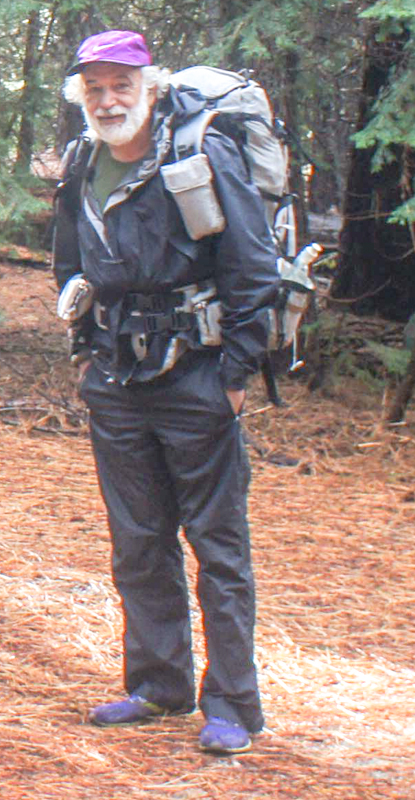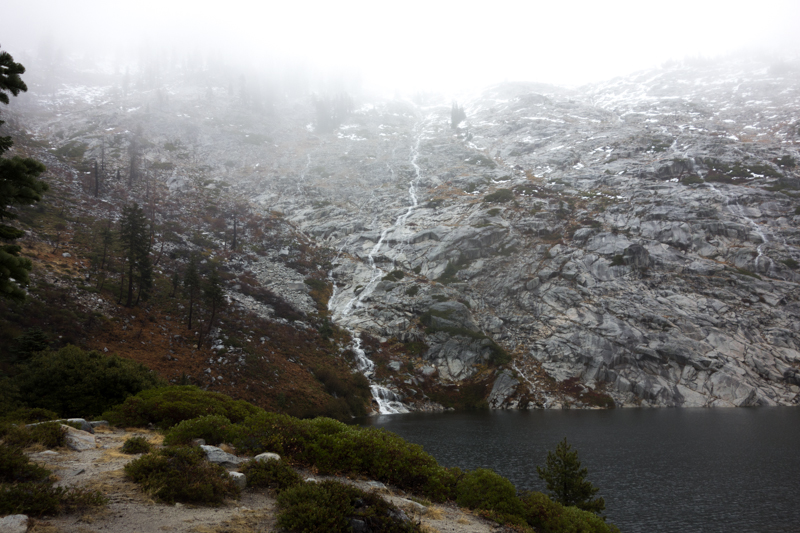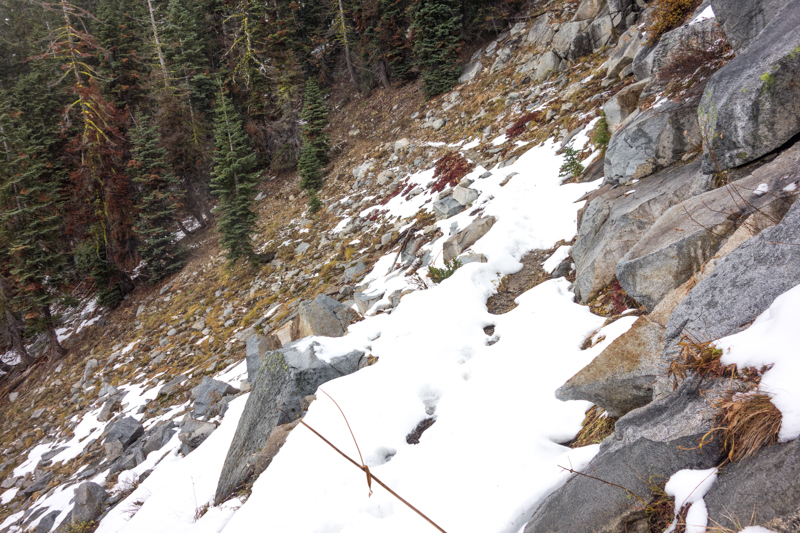
Ostensibly it is pretty common for backpackers to bring an extra pair of shoes for crossing streams and/or to use at the campsite after a long day of walking. So I thought I would share how I do this. This does not apply to winter hiking, which I shall define as daytime temperatures below freezing and lots of snow. For those trips, this is my shoe system.
Water Shoes
Let’s start with shoes to walk across water (not walk on water, of course). It seems that many folks take off their hiking footwear and change into a pair of shoes to cross water. I’d like to share how, on a recent trip, I handled water crossings, standing puddles of water, and trails that were often immersed in rivulets of water during a trip with constant rain.
But before we discuss the “how” I need to provide some background information.
First, I have lived in the hottest desert in the US for over 40 years. In the summer I often work outside in temperatures above 115F; temperatures that most people simply can’t deal with. The down side to this desert acclimation is the fact I do very poorly in cold weather. In cold weather I need more insulation and a warmer sleeping bag than the average person.
Secondly, as I present my water crossing system, keep in mind that I was walking in ambient temperatures just above freezing up to around 42F. Water in streams was often snow fed, meaning it wasn’t much above 32F.
The water crossing system used on this trip was a pair of Darn Tough Merino Wool Socks and a pair of Mizuno Wave Universe 4 Running Shoes (cross-country racing flats). The weight of the socks is 2 5/8 ounces for the pair, and the shoes weigh 5 ½ ounces each.
Right off the bat, about 10 minutes into the hike and before we even had a chance to warm up, we had to cross a stream (the map says it is a river) about 50 yards wide about mid-calf high. Water proof shoes wouldn’t work because water was higher than the top of any shoe or boot. Actually waterproof shoes are a bad idea because if water gets into your shoes, which it will, the shoes cannot dry out. And if you think that waterproof/breathable shoes will work, that is wrong too. When water gets in the “breathable” function ceases to work. Plus, just like the search for the Holy Grail of Waterproof/breathable Rainwear waterproof/breathable footwear is an exercise in futility too. Back to the story…
The water was achingly cold. Because my shoes are constructed with a very breathable material, the water drained out immediately after reaching the shore and after a couple minutes of walking my feet were fine. The pressure of walking pushed the water in my soaked wool socks out and through the light material of the shoes. Even when damp, wool will continue to provide enough insulation for your feet and with continued walking your feet will generate enough heat to start drying the socks.
Camp Shoes
Since these “water shoes” are light and dry quickly, they are excellent camp shoes. There isn’t much more to say about them for this use.
The Important Point of this Post
Besides being my water crossing shoes and camp shoes, these shoes are also my go to backpacking shoes. I don’t have a separate pair of shoes for crossing water or wearing around camp. Why would a hiker want to carry an extra pair of shoes in their pack; why haul extra weight that really is unnecessary?
Now, you might say “Nick, those shoes don’t have pronation compensation, arch support, or even ankle support.” And you would be correct. But those things aren’t needed – they have been invented by the shoe and boot manufacturers so you will buy their expensive products; products you don’t need for backpacking. I have been hiking almost exclusively in racing flats for 8 years. The only exception is in winter or when I expect to encounter a lot of cacti, especially jumping Cholla. For cactus thorns I wear a little heavier trail running shoe.
This particular brand and model of shoe are not something I recommend per se, they are the lightest I could find a few years ago and I bought several pair because shoe companies have a habit of discontinuing good products. The newest model of Mizuno Wave Universe is even lighter. I’m happy with Mizuno cross country flats. So while I don’t recommend you go out and buy a pair of these, I do recommend you look into buying cross country racing flats as backpacking shoes. Keep in mind that these are truly minimalist shoes, so you might want to read about my thoughts on the Minimalist Shoe Craze I wrote several years ago.
Cross country racing flats aren’t for everyone, and if you want something a little more robust a quality trail running shoe will suffice for backpacking.
Boots are not needed to backpack!
As long as a shoe is properly fitted either type of running shoe will do triple duty as your hiking, camp, and water crossing shoe.

